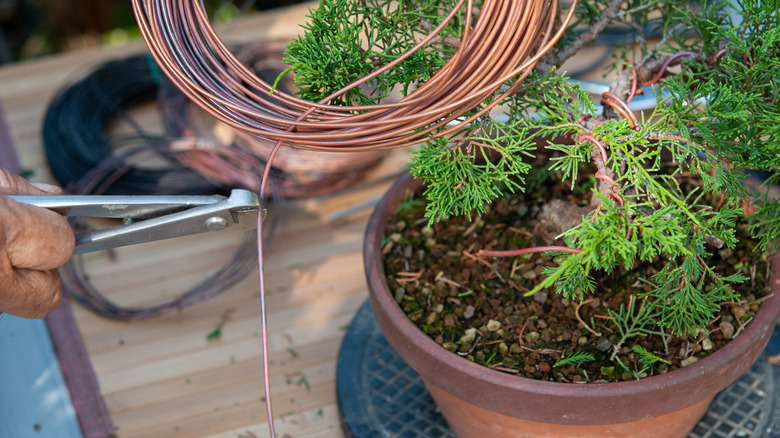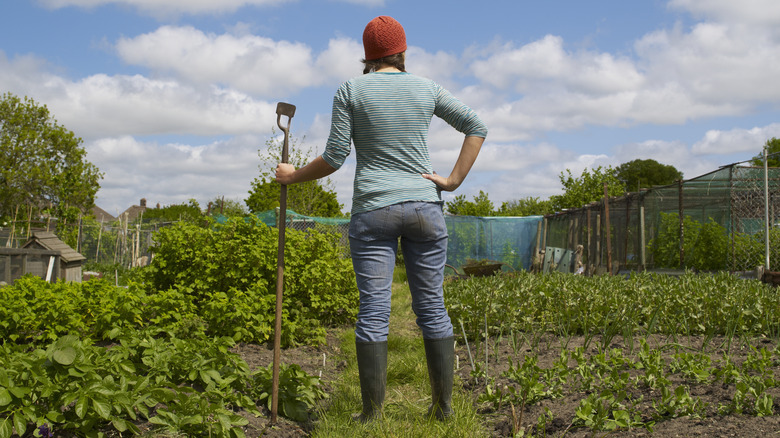What Is Electroculture Gardening, And Is It Worth A Try?
Electro-what? Electroculture gardening. Although this may sound bizarre and like some newly trending faux practice from another social media platform, it's not. Electroculture gardening was first recorded to have been practiced in the late 1700s and became officially recognized around the early 1900s.
As shocking as it sounds, there have been several successful experiments since its pioneering days that continue to prove that this way of gardening may be part of our future. Electroculture gardening utilizes the flow of an electric charge to stimulate plant growth, amplifying results. Studies have shown that plants do indeed respond to electricity with the most obvious result of an even larger plant and overall more successful yield.
In 2006, a biotechnologist from Imperial College London named Dr. Andrew Goldsworthy offered an explanation for why plants seem to be showing such positive results in electrocultural experiments. He proposed that it all has to do with certain evolutionary traits developed in response to thunderstorms and heavy rainfall. Plants can sense it! Their genes trigger after receiving an electrical charge. This spikes their metabolism and the amount of water their roots can soak up, thereby increasing their growth rate and potential.
What do you need to test it out yourself?
The power of electricity doesn't stop there, as its benefits include a higher nutritional value in the crop itself and the minimal (if any) need for chemicals such as fertilizer or pesticides. Anything not requiring chemicals is certainly ideal and worth a try.
Luckily, electroculture gardening doesn't require much to get started and see the results yourself. All you need are some tools and an idea of what exactly you're doing unless you don't mind joining Benjamin Franklin and his kit experiment.
One easy and popular DIY apparatus to get you started would be the electroculture spiral antenna, which is essentially just a copper wire and rod that functions as an antenna to gather energy from the atmosphere, channeling it into the ground and then to your plant.
Before attempting to create this, look into something you're interested in growing, try tomatoes, peppers, lettuce, or strawberries, for great results, but in all honesty, any plant shall do. Now that your subject has been found, it's time to acquire three simple materials– all of which can be found at your local hardware store or online. Wood dowels, a magnetic compass, and copper and zinc wiring.
How to make your very own spiral antenna
Once you have obtained these items, take your wood dowel (quick tip: the taller the wood dowel, the better the results for your plant) and metal wires and begin spiraling them all the way up to the top of the wood, leaving about 1 to 2 inches of room between each coil. Then, ensure that the upwards spiral is in line with the north on your magnetic compass.
Once you have completed preparing the antenna, stick it into the soil measuring about 8 inches deep and wait for that perfect moment to finally cry out, "IT'S ALIVE! IT'S ALIVE!" just like Dr. Victor Frankenstein.
Mad science aside, electroculture gardening really does work. Matt Roeske, the founder of Cultivate Elevate, puts it this way in a promotional video for the documentary "Electroculture Life," he says, "The copper antenna enhances the sap that is always flowing through the plant, so the plant can get more nutrients and live a healthier life." That sounds like it's worth a try, don't you think?


